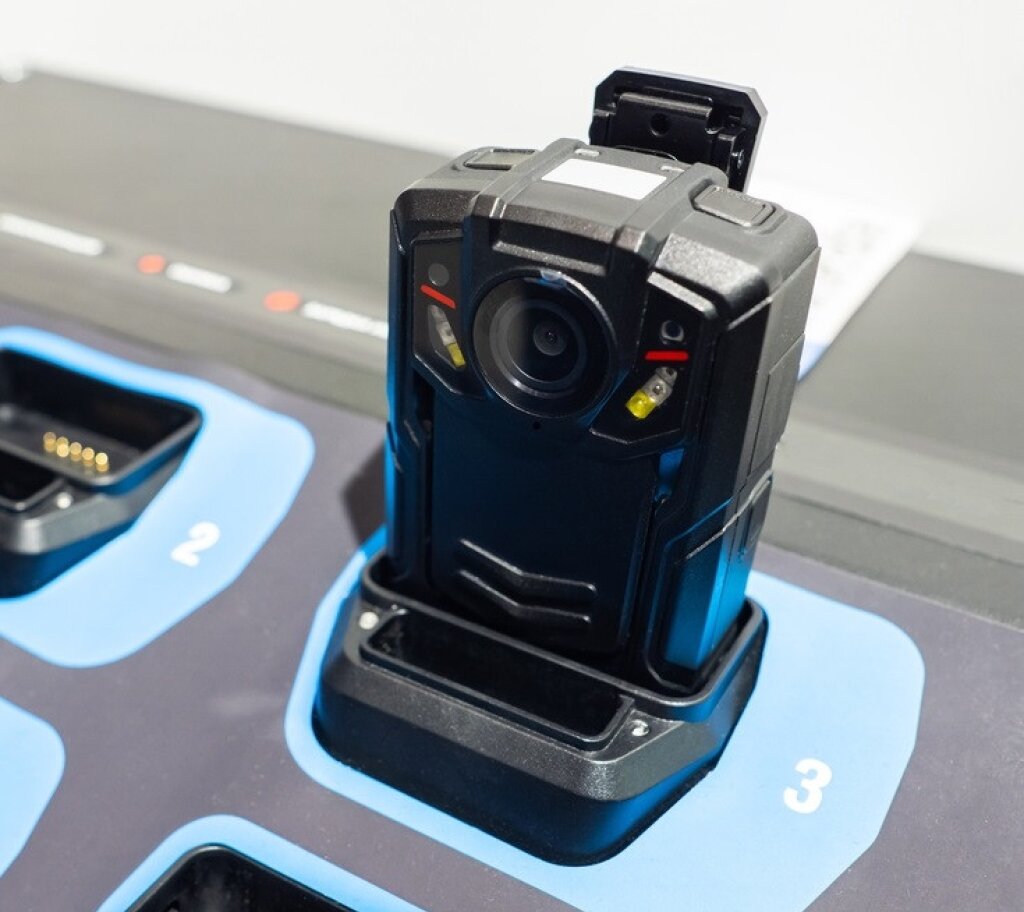Streamline Claims, Protect Privacy, and Comply with Smart Video and Audio Redaction Tools
In this article, we look at how video footage presents insurance companies with a wide range of opportunities to assess and document sites, accident damage and claims, and the legal obligations and technical challenges that video processing entails.
Discover how the insurance sector gains operational efficiencies and stays fully compliant when processing CCTV recordings, customer videos, bodycam footage, drone video footage and doorbell recordings.
The Growing Importance of Redaction in Insurance
Today’s insurance landscape is changing fast, driven by digital transformation, regulatory scrutiny and customer expectations around privacy. At the heart of this transformation is video and audio data - an increasingly important part of insurance workflows.
From dashcam footage and doorbell videos to drone-based assessments and bodycam recordings, visual and audio media is being captured at every stage of the insurance lifecycle. Whether used for assessing property damage, investigating liability or validating claims, this dynamic content provides unparalleled transparency and insight.
But this presents a double-edged sword.
While media-rich data enables better decision making, it also introduces big challenges around data privacy, regulatory compliance and operational efficiency. Every video file may contain sensitive information - personally identifiable details, private conversations or the presence of third-parties - that needs to be redacted before it can be used, shared or stored.
Without redaction tools, insurers are at risk of privacy breaches, legal repercussions, customer dissatisfaction and internal operational inefficiencies.

Why Redaction is No Longer Optional
Redaction is often seen as a compliance task. But in today’s fast-paced insurance world, it’s a strategic imperative that underpins every core function: claims, underwriting, fraud prevention, customer experience and beyond.
Let’s take a closer look at the reasons redaction must be part of insurance operations:
1. Privacy by Default
Privacy isn’t just a legal requirement; it’s a principle that insurers must actively uphold. Redaction tools enable ‘privacy by design’ by automatically hiding or masking sensitive information such as:
Faces of bystanders
Licence plates of unrelated vehicles
On-screen addresses or identifiers
Children or vulnerable individuals in footage
Background documents or personal belongings
By redacting this information before video is stored or shared, insurers align themselves with the principles of data minimisation and security by default, so only the necessary information is visible to authorised parties.
2. Compliance with Global Privacy Regulations
Insurance companies are subject to strict privacy laws, both locally and internationally. Regulations like GDPR (EU and UK), CCPA and CPRA (California), HIPAA (USA) and others worldwide require that any personal data collected, stored or processed must be protected through “appropriate technical and organisational measures”.
Redaction is one such measure that:
Prevents unauthorised access to identifiable data
Facilitates sharing with legal teams, regulators and third parties
Enables the fulfilment of consumer requests for data access or deletion
Ensures compliance with core regulatory requirements
For example: A homeowner requests surveillance footage of a break-in. The video also captures neighbours and their children. Redaction enables the insurer to fulfil the request lawfully – which preserves the homeowner’s right without breaching the privacy of other people.

Use Cases for Redaction Across the Insurance Lifecycle
Redaction is critical at every stage of the insurance process. Below are key scenarios in which automated redaction tools are already making a tangible impact:
1. Claims Investigation
Insurers use video and audio recordings from customers, field agents or third parties to investigate incidents such as traffic accidents, property damage or natural disasters.
This media often contains sensitive or irrelevant information that needs to be removed before the footage is stored or shared with stakeholders. Automated redaction ensures this information is:
Removed quickly and reliably
Shared with claims adjusters or external assessors
Retained for audit purposes without breaching privacy
2. Fraud Detection and Prevention
Video surveillance is a powerful fraud detection tool. It can reveal inconsistencies between reported claims and actual events, such as a supposedly injured claimant seen lifting heavy objects, or evidence that damage occurred before a policy was activated.
However, this footage may also capture:
Bystanders
Children
Residential interiors
Private conversations
Redaction plays a vital role in separating relevant evidence from this sensitive content, to ensure that investigations remain focused, compliant and ethical. By protecting third-party privacy, insurers can use surveillance footage confidently to detect fraud while avoiding legal and reputational risks.
3. Data Security and Cyber Risk Management
Unredacted footage stored on servers or cloud platforms presents a serious cybersecurity risk. In the event of a data breach or cyberattack, sensitive video files could expose large volumes of personal data, from faces to confidential locations or spoken content.
Redaction minimises this exposure. By blurring or masking sensitive information before storage, insurers limit the scope of data compromised in the event of an incident and demonstrate to regulators that they took reasonable steps to secure personal data.
4. Operational Efficiency at Scale
As insurers face increasing claim volumes, manual redaction is no longer viable. Reviewing and editing hours of video footage frame-by-frame is time-consuming, labour-intensive and prone to human error.
Automated redaction solutions like Facit’s Identity Cloak enable insurers to:
Process video and audio at scale
Maintain faster claims turnaround times
Reduce administrative burdens on adjusters and legal teams
Ensure consistent, high-quality data handling practices
This operation efficiency translates into cost savings for insurance companies, improved productivity and better service delivery across teams.
5. Risk Assessment and Underwriting
During underwriting processes or renewals, insurers use tools like drones, on-site cameras and remote inspections to assess risks tied to properties, vehicles or equipment.
These insurance assessments can inadvertently record neighbours, public streets, business operations or unrelated assets. Redaction ensures:
Only relevant visuals are reviewed
Unrelated or confidential visuals are obscured
Footage can be shared internally without risking regulatory breaches
6. Customer Communications and Call Reviews
As part of routine operations, insurance companies record video meetings and phone calls with customers. These recordings are used for quality assurance, clarification and future dispute resolution.
Redacting personally identifiable information (PII) such as names, birthdates, addresses or account details enables these recordings to be:
Reviewed without compromising privacy
Used in training or compliance reviews
Stored in alignment with data retention and protection policies
7. Internal Training and Development
Real-life case examples offer valuable learning for new staff or compliance teams. But using actual footage presents privacy risks unless the media is anonymised.
With redaction tools, insurers can transform real cases into effective training materials by removing:
Faces and voices
Account details
Policyholder information
Private conversations
Redacted video makes learning immersive, practical and compliant for trainees in the insurance sector.

The Role of Redaction in Remote Audits
With many insurers now using video for remote inspections and compliance checks, redaction becomes even more critical. Whether it’s a loss adjuster with a bodycam or a policyholder submitting footage for underwriting, private details can easily slip through.
Redaction tools help insurers share video internally or with regulators – without risking privacy violations.
Choosing the Right Redaction Platform for Insurers
Solutions like Facit’s video redaction software Identity Cloak and Facit’s Document Redaction tools offer features tailored to the insurance sector:
Key Features
Automated Detection
AI detects faces, licence plates or other identifiers within frames.Flexible Redaction Styles
Blur, pixelate, mute, bleep or cover sensitive data.Audio Redaction
Mute names, account numbers or other spoken identifiers.Editing Tools
Trim irrelevant footage to focus on key moments.Document Redaction
Secure confidential policy documents or forms.
Compliance and Privacy
With growing global data regulations, compliance is constant requirement. Facit’s redaction platform supports:
GDPR (General Data Protection Regulation)
CCPA (California Consumer Privacy Act)
HIPAA (Health Insurance Portability and Accountability Act)
Identity Cloak ensures that insurers can share, store or audit multimedia data without exposing personal data or risking non-compliance.
Multi-Format Redaction Styles: Blur, pixelate, mute audio, beep audio, overlay content.
Audio Redaction: Detect and mute names, numbers, words.
Footage Editing Tools: Trim, segment, extract sections.
Document Redaction: Remove data from policy documents, forms, internal records.
Enjoy a compliance-ready framework. With Identity Cloak, you can:
Share media internally or externally
Reduce risk
Demonstrate compliance
Redaction as a Business Advantage
In an industry built on trust and transparency, redaction is more than risk mitigation; it is differentiation that generates competitive advantage.
1. Build Trust
Today’s consumers are privacy aware. They expect you to protect their data. Companies that do protect customer data demonstrate integrity and build long-term relationships.
2. Mitigate Risk
Fines for privacy breaches can be millions. Lawsuits, class actions, regulatory investigations are real. Redaction tools help avoid these outcomes by never exposing sensitive content.
3. Enable Scalable, Smart Operations
Redaction frees your team from low-value tasks. Adjusters can focus on resolution, legal teams on strategy, IT teams on innovation—while your redaction system handles privacy for you.
Redaction in the Insurance Sector: FAQs
Q. Why do insurers need redaction tools?
A. To protect video, audio and document data, comply with data privacy regulations and safely process or share media without breaching confidentiality.
Q. How does redaction help with claims investigation?
A. Redaction hides personal information in footage so investigators can focus on facts without breaching unrelated parties’ rights.
Q. What content can be redacted?
A. Faces, licence plates, spoken words, on-screen text, account numbers, and any other data that can identify individuals.
Q. Can redaction be used for internal training?
A. Yes. Redacted footage can be used for real-case training scenarios safely, which increases relevance while upholding people’s privacy.
Q. How does redaction reduce legal exposure?
A. Redaction prevents data leaks and ensures shared content meets compliance standards so you reduce the risk of regulatory action or litigation.
Start Redacting Now
As the insurance industry goes increasingly digital, managing video and audio content responsibly is key.
Automated redaction tools like Facit’s Identity Cloak can:
Speed up workflows
Build customer trust
Stay ahead of compliance
Protect everyone’s data
Contact us today to see how redaction can be integrated into your claims, compliance or fraud prevention systems.
With the right video redaction software, privacy is more than a ticked box. It’s the foundation of trust, efficiency and operational excellence in the digital world.



